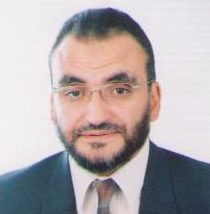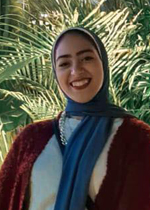Team Members

Omar Refaie
Team Leader

Yosr Gamal
Team Member

Dina Ashraf
Team Member

Hagar Mohamed
Team Member
Supervisors

Prof. Alaa Hamdy
Professor

Eng. Maha Sayed
Teaching Assistant
Collaborators

Prof. Hesham Sallam
Professor

Mansoura University Vertebrate Paleontology center
Research center
Abstract
This study presents a fully automated method for identifying and classifying fossil teeth in different groups of animals, including Elephants, Sharks, Hyrax, and Afradapis. Fossil teeth are valuable indicators of past environments and diets, but their manual identification is time-consuming and requires considerable expertise. By training deep-learning algorithms on modern teeth with known taxonomic identification, this method can be used to classify and extract information about fossil teeth, including their diet type. The method is validated on a dataset of more than 20,000 images representing more than 50 tooth of the 4 classes, and the results demonstrate its reliability for fossil teeth detection from 2D images.
System Objectives
• This software aims to provide a valuable tool for users in the field of identifying teeth fossils, as there is currently a gap in the market with no existing mobile application serving this purpose.
• To accurately identify and classify teeth fossils based on their shape and other features using deep learning models.
• Simplify the tasks of identifying teeth fossils, enabling experts to allocate more time and attention towards conducting advanced analysis on fossils that may require the use of scientific tools.
• Provide a user-friendly interface for users to interact with the system and input images of teeth fossils to be classified.
• Equip unspecialized fossil collectors with an easy-to-use application that can help them identify their own collections of teeth fossils.
• Assist users by answering their questions by experts on the application.
• Provide an insightful tool for non-experts, students in relevant fields, and fossil collectors to identify their collections and have more knowledge about them.
System Scope
• Our dataset of teeth fossils has been created in collaboration with Mansoura’s University vertebrate paleontology laboratory (MUVP). The dataset contains high-quality images of the teeth fossils, which have been professionally captured and sorted based on their species.
• The system will use deep learning algorithms to identify and classify teeth fossils such as MobileNet and SqueezeNet since they are lightweight models that could be applied to mobile applications.
• The identification and classification processes will be based on the tooth shape, pattern, and other features.
• The mobile application will be able to identify the teeth fossils only and will take input data in the form of digital images.
• The system will not include physical hardware for capturing images of teeth fossils or for processing images outside of the deep learning algorithms.
• As our dataset contains samples of damaged and incomplete teeth, the system will be able to handle different types of teeth fossils, including those that are damaged or incomplete
• The system aims to cover wider range of animals in the future as the dataset expands.
MUVP Collaboration
Our project on identifying teeth fossils thrives on a close collaboration between our team of computer science students and the MUVP research center. This partnership entails a two-fold arrangement: first, the MUVP center plays a crucial role by providing us with essential scientific information and supplying the teeth specimens required to build our comprehensive dataset. This collaboration ensures that we have access to accurate and up-to-date knowledge in the field, enabling us to develop a robust system for identifying and analyzing teeth fossils. Second, our project takes a mobile application approach, specifically designed to meet the needs of the research center. The application features aim to facilitate various processes within the lab, including organizing field trips, applying for training programs, and arranging visits to the lab. By streamlining these administrative tasks and providing a user-friendly interface, our collaborative efforts significantly contribute to the efficiency and effectiveness of the MUVP research center, assisting its expansion and impact in the field of paleontology both locally and globally. This synergy between computer science and paleontology exemplifies the power of interdisciplinary collaboration in advancing scientific research and discoveries.
Documents and Presentations
Proposal
You will find here the documents and presentation for our proposal.
Document
Presentation
SRS
You will find here the documents and presentation for our SRS.
Document
presentation
SDD
You will find here the documents and presentation for our SDD.
Document
presentation
Thesis
You will find here the documents and presentation for our Thesis


